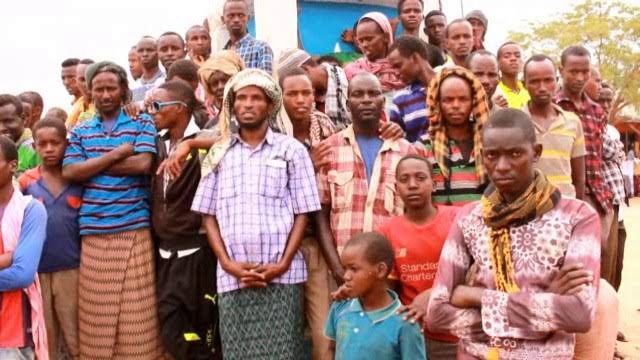Somalia has a proud cultural heritage for a long time, and sometimes this fact seems to contradict the simplicity of the people in their lives, especially in the Badia regions. In fact, Somalia, which is one of the African nations that geographically borders the Arabian Peninsula, has been in close contact with the Islamic and cultural centers for more than a thousand years. The Somali people are all Muslim and rooted in Islam, as Islam extends in it to the era of the first Muslim pioneers who emigrated To Somalia before the Prophet's migration to Medina.
The Somali people have used the Arabic language because it is the language of the Noble Qur’an and prayer, to communicate with the outside world, to write correspondence, and to keep records for more than a thousand years.
Although the Somali language has not yet been written, it is very advanced and has a large number of words, and the Somali language has great unwritten values that people pass on from mouth to mouth, and they have entrusted it with their memories and hearts, and we can quite easily compare these great manners with the literatures of other nations And any person who has a close contact with the customs of the Somalis in the desert of Somalia will inevitably find that most of the customs have a deep social meaning.
The tribal system played an important role before the establishment of the modern state and the new society, as was the case in Saudi Arabia, Yemen, Sudan and other Arab and African nations. The tribe represented a small, sovereign state that would defend itself and conclude treaties, and we can say, without need of fatal details, that the salient feature was that it was democratically governed and that it was in fact a state of prosperity according to the principle that became an old saying or that ((the tribe There is no one who is hungry if everyone is not hungry))
With the establishment of the Somali state and the strengthening of national unity, the Somalis worked hard to renounce the tribal system that obstructs progress and advancement.
community characteristics
The Somali society, like other pastoral societies of the Hamitic elements at the beginning of its life, consisted of several tribes with different names, but they agreed in that they represented one mass for one element, the Hamitic element. And the Rahween as mentioned in the book ((For the sake of hopes in the history of Somalia)) by Sharif Al-Aidaros.
This large mass of Somalis, regardless of the names of the tribes or groups, they all have sexual characteristics that differ fundamentally from their neighbors in Ethiopia and Kenya. The Somali in general is empty in height, ((height in inches is about 68)) good in stature, full of growth, with a moderate forehead, rounded like the protective elements completely (the width of the skull is 75), and with sunken eyes, a straight Caucasian nose, a thin regular mouth, and lips that are not thick, The hair is slightly curly, and the skin color ranges from light tan to somewhat dark brown.
He is fast-moving, very valiant, strong-willed, grows up in courage, courage, generosity and generosity. And his grandfathers are from customs and traditions, and he means to preserve his lineage and teach him his sons to be proud of him.
















No comments:
Post a Comment